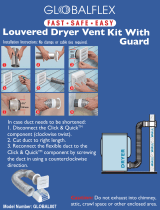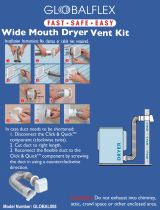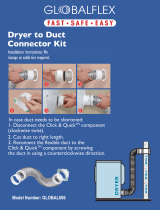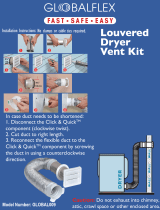Page is loading ...

M212016EN-C
User Guide
HMD60 Series Humidity and Temperature
Transmitters for Ducts in HVAC
HMD62 TMD62

PUBLISHED BY
Vaisala Oyj
Vanha Nurmijärventie 21, FI-01670 Vantaa, Finland
P.O. Box 26, FI-00421 Helsinki, Finland
+358 9 8949 1
Visit our Internet pages at www.vaisala.com.
© Vaisala Oyj 2020
No part of this document may be
reproduced, published or publicly
displayed in any form or by any means,
electronic or mechanical (including
photocopying), nor may its contents be
modified, translated, adapted, sold or
disclosed to a third party without prior
written permission of the copyright holder.
Translated documents and translated
portions of multilingual documents are
based on the original English versions. In
ambiguous cases, the English versions are
applicable, not the translations.
The contents of this document are subject
to change without prior notice.
Local rules and regulations may vary and
they shall take precedence over the
information contained in this document.
Vaisala makes no representations on this
document’s compliance with the local
rules and regulations applicable at any
given time, and hereby disclaims any and
all responsibilities related thereto.
This document does not create any legally
binding obligations for Vaisala towards
customers or end users. All legally binding
obligations and agreements are included
exclusively in the applicable supply
contract or the General Conditions of Sale
and General Conditions of Service of
Vaisala.
This product contains software developed
by Vaisala or third parties. Use of the
software is governed by license terms and
conditions included in the applicable
supply contract or, in the absence of
separate license terms and conditions, by
the General License Conditions of Vaisala
Group.
This product may contain open source
software (OSS) components. In the event
this product contains OSS components,
then such OSS is governed by the terms
and conditions of the applicable OSS
licenses, and you are bound by the terms
and conditions of such licenses in
connection with your use and distribution
of the OSS in this product. Applicable OSS
licenses are included in the product itself
or provided to you on any other applicable
media, depending on each individual
product and the product items delivered
to you.

Table of contents
1. About This Document................................................................................... 3
1.1 Version Information.......................................................................................... 3
1.2 Related Manuals................................................................................................3
1.3 Documentation Conventions...........................................................................3
1.4 Trademarks........................................................................................................ 4
2. Product Overview........................................................................................... 5
2.1 Introduction to HMD60 Series.........................................................................5
2.2 HMD62 and TMD62 Basic Features and Options.......................................... 5
2.3 Available Parameters and Default Scaling.....................................................5
2.4 Connectivity to Vaisala Insight Software.......................................................6
2.5 Transmitter Parts...............................................................................................7
2.5.1 Cable Gland and Conduit Options...........................................................8
2.5.2 Filter Options..............................................................................................8
2.5.3 Humidity Sensor Options..........................................................................9
2.5.4 Transmitter Board.................................................................................... 10
2.5.5 Trimmers.....................................................................................................11
2.5.6 DIP Switch Output Selection (HMD62)..................................................12
2.6 Filtering Factor.................................................................................................13
2.7 Environmental Compensation (HMD62)...................................................... 13
3. Installation........................................................................................................14
3.1 Transmitter Dimensions..................................................................................14
3.2 Duct Mounting Overview................................................................................15
3.3 Installing into Duct.......................................................................................... 16
3.4 Wiring................................................................................................................17
3.4.1 Startup Surge Current............................................................................. 18
4. Calibration and Adjustment...................................................................... 19
4.1 Calibration and Adjustment Overview..........................................................19
4.2 Calibration and Adjustment Using Trimmers...............................................19
4.2.1 1-Point Adjustment Using Trimmers and Reference Calibrator.........20
4.2.2 Adjusting Output Using Trimmers and Reference
Transmitter (1-point adjustment)..........................................................20
4.2.3 Resetting Trimmers Back to Zero...........................................................21
4.3 Calibration and Adjustment with Insight PC Software.............................. 22
4.3.1 2-Point Adjustment with Insight and Reference Calibrator...............23
4.3.2 1-Point Adjustment with Insight and Reference Transmitter.............24
4.4 Calibration and Adjustment with MI70 Handheld Indicator......................25
4.4.1 1-Point Adjustment Using Reference Environment.............................25
5. Operating with Insight PC Software.....................................................28
5.1 Vaisala Insight Software................................................................................ 28
5.2 Connecting to Insight software.................................................................... 28
5.3 Insight Main View........................................................................................... 30
5.3.1 Basic and Advanced User Modes..........................................................30
Table of contents
1

5.4 Configuring Analog Outputs with Insight.................................................... 31
5.4.1 Testing and Adjusting Analog Output Current (mA) Level................32
5.5 Configuring Minimum and Maximum RH and T Errors with Insight.........33
5.6 Changing Pressure Compensation Settings with Insight (HMD62)......... 35
5.7 Setting Filtering Factor with Insight............................................................ 36
6. Operating with MI70 Indicator................................................................37
6.1 Overview of MI70 Support............................................................................ 37
6.1.1 MI70 Indicator Parts................................................................................37
6.2 Connecting HMD60 to MI70 Indicator.........................................................38
6.3 Basic Display................................................................................................... 39
6.4 Graphical Display............................................................................................39
6.5 Main Menu.......................................................................................................40
6.6 Holding and Saving the Display................................................................... 40
6.7 Recording Data................................................................................................41
7. Maintenance....................................................................................................42
7.1 Cleaning...........................................................................................................42
8. Technical Data................................................................................................43
8.1 Specifications..................................................................................................43
8.2 Spare Parts and Accessories.........................................................................45
8.3 Transmitter Dimensions.................................................................................46
Warranty............................................................................................................ 47
Technical support............................................................................................ 47
Recycling........................................................................................................... 47
HMD62 TMD62 User Guide M212016EN-C
2

1. About This Document
1.1 Version Information
Table 1 Document versions
Document Code Date Description
M212016EN-C February 2020 This manual. Added information on HUMICAPâ 180V
catalytic sensor option, sintered teflon filter option, and
startup surge current.
M212016EN-B May 2019 Previous version. Added information about short probe
option and the HMD65 transmitter model, updated the
information on the eect of DIP switch parameter
selection on Insight configuration. Corrected filtering
factor formula. Stability specification corrected, lead-
through and plug appearance updated in illustrations.
M212016EN-A September 2018 First version of the document.
1.2 Related Manuals
Table 2 Related Manuals
Document Code Description
M212049EN HMD62 and TMD62 Multilingual Quick Guide (languages: English,
German, French, Spanish, Portuguese, Russian, Chinese, Japanese)
M212243EN HMD65 User Guide in English
M212264EN HMD65 Multilingual Quick Guide (languages: English, German,
French, Spanish, Portuguese, Russian, Chinese, Japanese)
1.3 Documentation Conventions
alerts you to a serious hazard. If you do not read and follow
instructions carefully at this point, there is a risk of injury or even death.
WARNING!
warns you of a potential hazard. If you do not read and follow
instructions carefully at this point, the product could be damaged or important
data could be lost.
CAUTION!
Chapter 1 – About This Document
3

Note highlights important information on using the product.
Tip gives information for using the product more eciently.
1.4 Trademarks
Vaisalaâ and HUMICAPâ are registered trademarks of Vaisala Oyj.
Windowsâ is either a registered trademark or trademark of Microsoft Corporation in the
United States and other countries.
All other product or company names that may be mentioned in this publication are trade
names, trademarks, or registered trademarks of their respective owners.
HMD62 TMD62 User Guide M212016EN-C
4

2. Product Overview
2.1 Introduction to HMD60 Series
The duct mounted HMD60 HUMICAPâ Humidity and Temperature Transmitters are designed
for monitoring humidity and temperature in demanding HVAC and light industrial applications.
HMD60 series transmitters provide stable, reliable, and highly accurate (up to ±1.5 %RH and
±0.1 °C (0.18 °F)) measurements, and are resistant to chemicals and dust.
HMD60 series transmitter options include 2 analog output models: HMD62 for measuring both
humidity and temperature, and TMD62 for temperature measurements. Both HMD62 and
TMD62 use 4 ... 20 mA loop-powered current output. The HMD65 transmitter model includes
both analog and digital output options.
Thanks to easy access to electronics also when the transmitter is installed to a duct,
configuration and adjustment can be carried out quickly and conveniently. Available
configuration and adjustment interface options range from physical trimmers and DIP switches
on the transmitter's circuit board to Vaisala Insight PC software for Windowsâ.
2.2
HMD62 and TMD62 Basic Features and
Options
• Measurement options:
• HMD62 for humidity and temperature measurement
• TMD62 for temperature measurement
• Humidity parameters available as output options in HMD62: RH, T
d
, T
df
, A, X, T
w
, H
• Analog output: 4 ... 20 mA, loop powered
• HMD62: 2 analog output channels for humidity and temperature measurements
• TMD62: 1 analog output channel for temperature measurement
• Power supply input: 10 ... 35 VDC / 20 ... 35 VDC
• Configuration and adjustment options:
• RH and T measurement field adjustment with trimmers
• Humidity output parameter selection with DIP switches (HMD62)
• Field adjustment with MI70 handheld indicator
• Configuration and adjustment with Vaisala Insight PC software
2.3
Available Parameters and Default Scaling
HMD62 Measurement Parameters and Default Analog Output
Scaling
Table 3 (page 6) shows the available output parameters and the default analog output
scaling of the parameters for HMD62.
Chapter 2 – Product Overview
5

Table 3 HMD62 Measurement Parameters and Default Scaling
Parameter Default Scaling for 4 … 20 mA Output Range
Relative humidity (RH) 0 … 100 %RH
Temperature (T) -20 ... +80 °C (-4 ... +176 °F)
Dew point temperature (T
d
) -40 ... +80 °C (-40 ... +176 °F)
Dew point/frost point
temperature (T
df
)
-40 ... +80 °C (-40 ... +176 °F)
Absolute humidity (A)
0 … 300 g/m
3
(0 … 131.1 gr/ft
3
)
Mixing ratio (X) 0 … 600 g/kg (0 … 4200 gr/lb)
Wet-bulb temperature (T
w
) -40 ... +80 °C (-40 ... +176 °F)
Enthalpy (H) -40 … 1600 kJ/kg (-9.5 ... 695.6 Btu/lb)
TMD62 Measurement Parameters and Default Analog Scaling
Table 4 (page 6) shows the available output parameters and the default analog output
scaling of the parameters for TMD62.
Table 4 TMD62 Measurement Parameters and Default Scaling
Parameter Default Scaling for 4 … 20 mA Output Range
Temperature (T) -20 ... +80 °C (-4 ... +176 °F)
Changing Measurement Parameter Scaling
If your application requires an analog output scaling that diers from the defaults shown in
Table 3 (page 6) and Table 4 (page 6), you can configure the scaling by connecting the
transmitter to Vaisala Insight PC software (requires Vaisala USB cable 219690).
2.4
Connectivity to Vaisala Insight Software
The transmitter can be connected to Vaisala Insight software using a Vaisala USB cable (order
code 219690). With the Insight software, you can:
• Calibrate and adjust the measurement.
• See device information and status.
• See real-time measurement.
• Configure output parameters and scaling.
More information
‣
Connecting to Insight software (page 28)
HMD62 TMD62 User Guide M212016EN-C
6

2.5 Transmitter Parts
1
2
3
4
5
6
7
8
9
Figure 1 HMD62 and TMD62 Transmitter Parts Overview
1
Captive screw (2 pcs, cross-head) for attaching the lid of the transmitter.
2 Screw (2 pcs) for mounting the transmitter on the installation surface.
3 Transmitter lid. Open the captive screws of the lid to access input and output electronics.
4 Transmitter base. Contains the input and output connectors on the transmitter board: see
Transmitter Board (page 10).
5 Cable gland (M16 x 1.5 lead-through) for leading wires into the transmitter.
6 Alternative lead-through (M20 x 1.5) for wiring.
7 Probe body. Long (shown) and short probe options available: see Transmitter Dimensions
(page 14).
8 Probe filter (default option: AISI 316L stainless steel).
9 HUMICAPâ sensor inside the probe filter.
Do not touch the sensor element.CAUTION!
Chapter 2 – Product Overview
7

2.5.1 Cable Gland and Conduit Options
HMD60 has 2 lead-throughs (M16x1.5 and M20x1.5) that can be used with a variety of cable
gland and conduit options. Figure 2 (page 8) shows the cable gland and conduit options
available from Vaisala.
1
2
Figure 2 HMD60 Cable Gland and Conduit
Options
1 Cable Gland and O-ring M16 x 1.5
(Vaisala order code: 254280SP). This is
the default option delivered with
HMD60.
2 Conduit fitting and O-ring (M16x1.5 /
NPT1/2") (Vaisala order code:
210675SP).
More information
‣
Spare Parts and Accessories (page 45)
2.5.2 Filter Options
Figure 3 (page 8) shows the filter options available for HMD60.
1 2 3
Figure 3 HMD60 Filter Options
1
Metal grid with PTFE membrane (Vaisala order code ASM212652SP). This is the default
option delivered with HMD60.
2 Sintered stainless steel filter (Vaisala order code HM46670SP).
3 Sintered teflon filter (Vaisala order code DRW244938SP)
HMD62 TMD62 User Guide M212016EN-C
8

More information
‣
Spare Parts and Accessories (page 45)
2.5.3 Humidity Sensor Options
HMD60 series humidity transmitters (HMD62 and HMD65) have the following humidity sensor
options (selected when ordering):
• HUMICAPâ R2: Latest generation industrial humidity sensor with improved corrosion
resistance.
• HUMICAPâ 180V: Humidity sensor with a catalytic surface for processes with hydrogen
peroxide (H
2
O
2
).
Note that the HUMICAPâ 180V and HUMICAPâ R2 sensors have a dierent temperature range
for specified accuracy: 180V accuracy has been specified down to -20 °C (-4 °F), and R2
accuracy down to -40 °C (-40 °F).
For full measurement specifications, see Specifications (page 43).
Chapter 2 – Product Overview
9

2.5.4 Transmitter Board
1
3
4
5
6
2
Figure 4 HMD60 Transmitter Board: Service Port, DIP switches, Trimmers and Screw Terminals
1
Service port for MI70 handheld indicator and Insight PC software cable connection.
2 DIP switches for humidity parameter selection (HMD62).
3 Trimmer for humidity measurement adjustment (HMD62).
4 Screw terminals for humidity measurement output (HMD62).
5 Screw terminals for temperature measurement output.
6 Trimmer for temperature measurement adjustment.
The HMD62 board (shown in Figure 4 (page 10)) includes options for both
humidity and temperature output. The TMD62 board includes only components
limited to temperature output options. See Wiring (page 17) for more
information.
HMD62 TMD62 User Guide M212016EN-C
10

2.5.5 Trimmers
1
Figure 5 Component Board Adjustment
Trimmer
1 Use a Phillips head screwdriver (PH0)
to rotate the RH or T adjustment
trimmer. To increase the measurement
output value, rotate the trimmer
clockwise. To decrease, rotate
counterclockwise.
Note that there is a slight delay before
the measurement output changes
after rotating the trimmer.
You can adjust the transmitter's RH (HMD62) or T (HMD62 and TMD62) measurement output
with the trimmers on the component board. During trimmer adjustment, the output of the
transmitter is corrected using the trimmers until the output matches the known value of a
reference.
±0 %RH
−1 %RH
−2 %RH
−3 %RH
−4 %RH
−5 %RH
+1 %RH
+2 %RH
+3 %RH
+4 %RH
+5 %RH
±0 °C
−0.06 °C
−0.12 °C
−0.18 °C
−0.24 °C
−0.3 °C
+0.06 °C
+0.12 °C
+0.18 °C
+0.24 °C
+0.3 °C
HMD62: −5 %RH ... +5 %RH TMD62, HMD62: −0.3 °C ... +0.3 °C
RH T
Figure 6 RH and T Trimmer Adjustment Ranges (Indicative)
You can only calibrate the relative humidity measurement (RH) and temperature
measurement (T). Other parameters (available for HMD62) are calculated
internally based on RH and T. Check that the output selection DIP switch is set to
RH when making adjustments with the physical trimmer; when using the Insight
PC software, set all DIP switches to the OFF position.
If you use the Insight PC software to adjust the measurement or to
restore the factory settings, always return the physical trimmer to the middle
position before starting. When you make an adjustment with Insight, the
position in which the trimmer is at that point is set as the ±0 point.
CAUTION!
Chapter 2 – Product Overview
11

2.5.6 DIP Switch Output Selection (HMD62)
Figure 7 HMD62 DIP Switch Example: T
df
Output Selected
RH Relative humidity
Td Dew point temperature
Tdf Dew point/frost point temperature
A Absolute humidity
X Mixing ratio
Tw Wet-bulb temperature
H Enthalpy
You can change the humidity parameter that is output on the RH channel of HMD62 with the
DIP switches on the component board. Select the parameter you want the transmitter to
output by sliding the parameter's DIP switch to the right (ON). In the example in Figure 7
(page 12), the transmitter's selected output parameter is dew point/frost point temperature
(T
df
). Keep the other DIP switches in the OFF position (left).
The selected parameter uses the default scaling shown in Table 5 (page 12).
Table 5 HMD62 Default Parameter Scaling
Parameter Default Scaling for 4 … 20 mA Output Range
RH 0 … 100 %RH
T
d
-40 ... +80 °C (-40 ... +176 °F)
T
df
-40 ... +80 °C (-40 ... +176 °F)
A
0 … 300 g/m
3
(0 … 131.1 gr/ft
3
)
X 0 … 600 g/kg (0 … 4200 gr/lb)
T
w
-40 ... +80 °C (-40 ... +176 °F)
H -40 … 1600 kJ/kg (-9.5 ... 695.6 Btu/lb)
Note that the humidity output parameter selected with the DIP
switches on the transmitter component board will be used instead of the
parameter selected with Insight. When using Insight to configure the output, set
all humidity parameter selection DIP switches on the transmitter component
board to the OFF position (left) to ensure they do not cause a conflict with the
Insight settings.
CAUTION!
HMD62 TMD62 User Guide M212016EN-C
12

HMD62 only:If you use Insight to set both analog output channels to output T
measurement, the humidity parameter DIP switches do not have an eect on the
output.
2.6 Filtering Factor
If the measuring environment produces occasional exceptionally high or low readings that
need to be averaged out in the output, you can apply a filtering factor to the RH or T output
(filtering factor range: 0.001 … 1.000). The filtering factor defines the speed at which the latest
measurement is integrated into the transmitter's output. By default, the filtering factor is set to
0.500, which means that the displayed output is a 50%+50% combination of the previous
measurement and the most recent measurement. To show the latest measurement directly in
the output, set the filtering factor to 1.000 (no filtering).
The following formula is used when calculating the output:
output = [(new (unfiltered) measurement × filtering factor) + (previous output × (1.0 - filtering
factor))]
The filtering factor can be configured with the Insight PC software.
More information
‣
Setting Filtering Factor with Insight (page 36)
2.7
Environmental Compensation (HMD62)
By default, the pressure value used in HMD62 measurement calculation is 1013.2 hPa. If the
pressure of your measurement environment diers from this, you can configure the
transmitter's pressure compensation value with the Insight PC software.
More information
‣
Changing Pressure Compensation Settings with Insight (HMD62) (page 35)
Chapter 2 – Product Overview
13

3. Installation
3.1 Transmitter Dimensions
The dimensions are given in millimeters and [inches].
299 [11.77]
49 [1.92]
250 [9.84]
101 [3.97]
mm
[in]
101 [3.97]
82[3.23]
82 [3.23]
Ø 12 [0.47]
19.5 [0.77]
149 [5.87]
49 [1.92]
100 [3.94]
101 [3.97]
Ø 12 [0.47]
19.5 [0.77]
Figure 8 Dimensions with Long and Short Probe
HMD62 TMD62 User Guide M212016EN-C
14

3.2 Duct Mounting Overview
90°
1
4
3
2
5
6
7
Figure 9 Duct Installation Overview
1
Make sure there is a minimum clearance of 5 m (16.5 ft) between the probe body and any
possible humidifier. Avoid installing in a location where condensation can fall on the
sensor inside the duct.
2 When installing the transmitter, drill a second hole approximately 30 cm (12 in) from the
installation hole, towards the direction of the air flow, and plug it with a removable seal.
This second hole is intended for later use in reference measurement with another device
when calibrating or adjusting the transmitter.
3 Check that the duct diameter is suitable for the probe body (see Transmitter Dimensions
(page 14)). Ideally, the sensor (probe head) should be installed in the middle of the duct.
4 Maximum air flow speed: 50 m/s (with sintered filter).
5 Avoid installing the transmitter in dead legs. Supersaturation can occur in areas where
there is no air flow.
6 Do not install the probe in a downward angle. Condensation can travel to the sensor along
the probe body if the probe points down.
7 Install the probe in a 90° angle so that the sensor is placed as close to the middle of the
duct as possible.
Chapter 3 – Installation
15

3.3 Installing into Duct
• Medium size crosshead screwdriver for mounting screws and lid screws.
• Small slotted screwdriver for screw terminals.
• Drill with 3.5 mm (0.14 in) and 13 … 15 mm (0.51 … 0.59 in) bits for making the
installation holes.
• Tools for cutting and stripping wires.
2 x Ø 3.5 [0.14]
Ø 13 ... 15 [0.51 ... 0.59]
Ø 12 [0.47]
82 [3.23]
82 [3.23]
mm
[in]
Ø 3.5 [0.14]
Ø 3.5 [0.14]
3.1 ... 3.4 Nm [2.3 ... 2.5 ft-lbs]
Figure 10 Drilling and Mounting Screws
1. Select an installation location for the transmitter on the duct surface and drill a
Ø 13 … 15 mm (0.51 … 0.59 in) hole for inserting the probe.
2. Push the probe through the hole on the duct until the transmitter body meets the duct.
3. Attach the transmitter body to the duct with 2 Ø 3.5 mm (0.14 in) screws.
Check that the insulation ring sits tightly over the installation hole. If the duct
has a negative pressure, external air can be drawn into the duct and aect
the measurement if the installation hole is not sealed tightly.
4. Optional: Drill a second hole for reference measurements approximately 30 cm (12 in)
from the transmitter installation hole. See Figure 9 (page 15).
5. Open the 2 captive screws on the transmitter body and remove the lid.
6. Attach the input/output wiring to the screw terminals on the transmitter component
board. See Wiring (page 17). Tighten cable glands firmly after wiring.
7. Check that the DIP switches and trimmers are in the correct position. See DIP Switch
Output Selection (HMD62) (page 12) and Trimmers (page 11).
HMD62 TMD62 User Guide M212016EN-C
16

8. Close the transmitter lid and switch on the transmitter's power supply input.
3.4 Wiring
HMD62
TMD62
mA
mA
mA
mA
+
−
+
−
mA
mA
+
−
Shield
Current loop 1:
RH, 4 ... 20 mA
Current loop 2:
T, 4 ... 20 mA
Current loop 1:
T, 4 ... 20 mA
Shield
Supply voltage for
each current loop:
20 ... 35 VDC at 600 Ω
10 ... 35 VDC at 0 Ω
Figure 11 HMD62 and TMD62 Wiring Diagrams
• Screw terminal wire size: 0.5 ... 2.5 mm
2
• Flat head screwdriver: 0.6×3.5 mm
Chapter 3 – Installation
17

Make sure that you prepare or connect only de-energized wires.WARNING!
Using a power supply with overload protection is recommended for electrical
safety.
3.4.1 Startup Surge Current
When the transmitter powers up, the startup surge current may rise up to 120 mA. If you are
connecting the transmitter to a system that uses a current limiting function, this can cause a
startup issue that prevents the transmitter from powering up.
To resolve a startup issue caused by current limiting, try one of the following options:
1. Adjust the current limiting function of the system to which you are connecting the
transmitter so that it can accommodate the startup surge current.
2. Add an extra load resistor between the +RH terminal and the power supply. The value of
the serial resistor must be calculated based on the supply voltage and shunt resistance
value.
HMD62 TMD62 User Guide M212016EN-C
18
/



